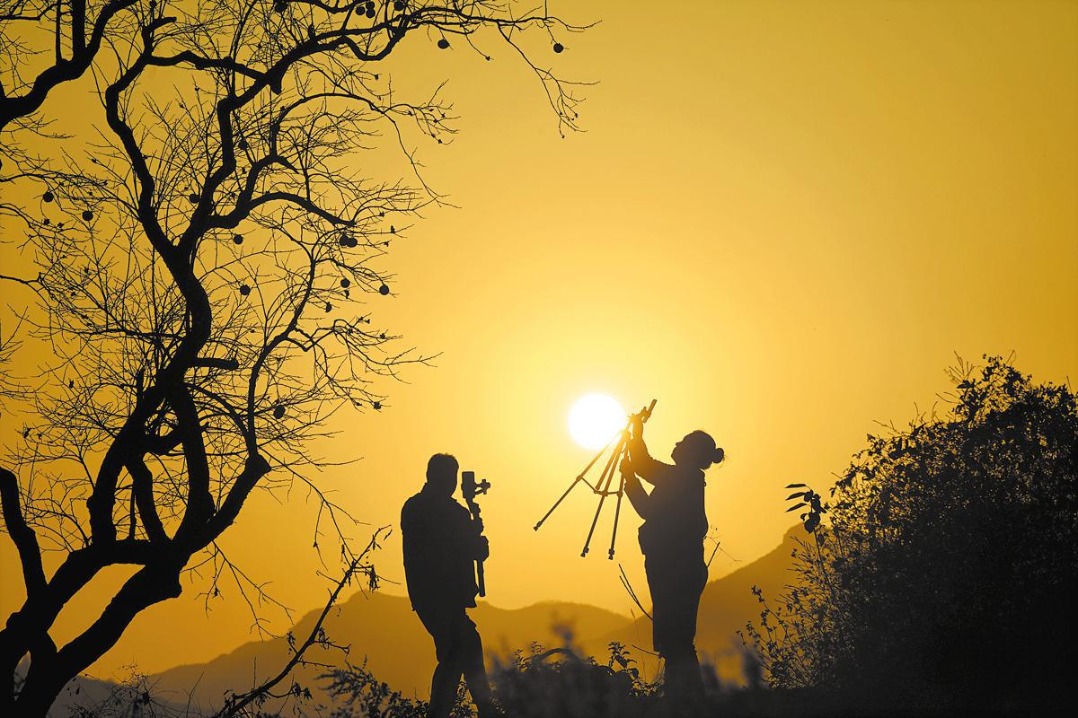Snow leopard conservation efforts breed success

Editor's note: As protection of the planet's flora, fauna and resources becomes increasingly important, China Daily is publishing a series of stories to illustrate the country's commitment to safeguarding the natural world.

Nature reserves are helping the big cat flourish in its core distribution areas across China. Li Hongyang reports.
Efforts to protect snow leopards have yielded notable successes, as evidenced by frequent documentation of the animal's activities.
Challenges persist, though, such as habitat fragmentation, degradation of vegetation and declines in prey populations.
The snow leopard's core distribution areas still retain their natural state to a high degree, thanks to shelter provided by national parks and nature reserves, according to the National Forestry and Grassland Administration.
In 1989, the snow leopard was listed as a national first-class protected wildlife species. Over 30 nature reserves and more than 70 grassroots conservation management stations have been set up in activity areas, covering more than half the animal's habitat nationwide, the NFGA said.
Among China's first five national parks, the Three-River-Source National Park, in Qinghai province, and the Giant Panda National Park, straddling the provinces of Sichuan, Gansu and Shaanxi, are key habitats for the big cat, which is classified as "vulnerable" by the International Union for Conservation of Nature.
In recent years, forestry and grassland departments and NGOs, such as Eco-Bridge Continental and the Shan Shui Conservation Center, have conducted long-term monitoring projects and investigations on the animal and its habitat.
Last year, the ECB used satellite tracking for the first time in China to show the animal's home range in the Qilian Mountains National Park Pilot Area.
In 2019, the management bureau of the Wolong National Nature Reserve in Sichuan released infrared camera footage from 2018. It showed the activities of a female snow leopard and her three cubs, and provided insights into their survival skills.
A spokesperson for the Giant Panda National Park Management Bureau said the footage showed that the snow leopard population in the high-altitude region of Wolong may have a higher density than the average.
"It proves that in the area around the leopards, there are abundant sources of food, a healthy population, good living conditions and a high regional density," it added.
Conservation projects provide job opportunities for locals, who can become reserve managers, researchers, rangers, guides and educators in wildlife monitoring, conservation and nature education.
In 2011, the Shan Shui Conservation Center and Peking University partnered to begin conservation work in Yunta, a village in Qinghai's Yushu city.
In 2013, the project, which initially focused on monitoring bharal populations, was expanded to include snow leopard conservation, according to the center.
A team of 14 dedicated herders from Yunta formed a snow leopard monitoring team, and all the members were equipped with infrared cameras and trained in field operations. Last year, joint monitoring by herders and researchers revealed that an average of 12 to 16 adult snow leopards inhabited the area annually, the center said.
The NFGA said snow leopards continue to face threats to their survival because the fragmentation of their habitat and the degradation of vegetation resulting from human activities persist on the edges of their distribution areas. This has led to a decline in prey populations and reduced the number of snow leopards each habitat can support, it said.
Management practices, such as fencing off grazing areas, can affect the normal movement patterns of snow leopards and their prey, and even result in populations becoming isolated in certain regions, the administration added.
- China launches new round of applications for nationwide childcare subsidies
- Xi congratulates Doumbouya on election as president of Guinea
- Chinese e-platform pushing AI education globally
- Shanghai researchers develop breakthrough breast cancer therapy
- Sycume thyroid meds added to national drug reimbursement list
- Chinese astronauts complete 1st cave training




































